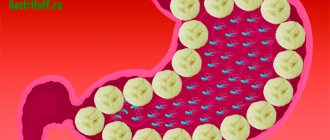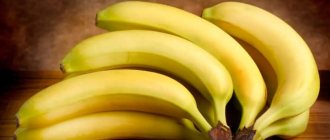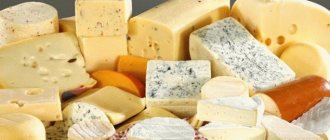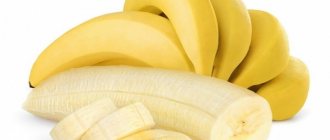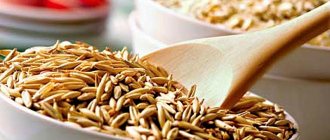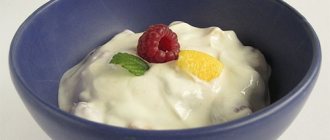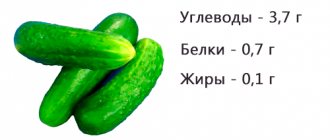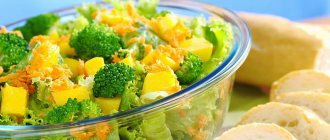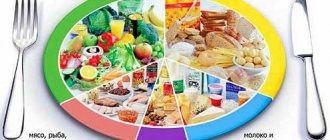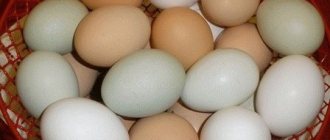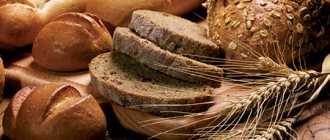What is pancreatitis? This is a disease of the pancreas, in which its tissue may begin to die. If you don’t catch it in time and start treatment, everything can end very sadly. That is, fatal.
A terrible forecast, isn't it? Where does treatment begin? First of all, with nutritional adjustments. What can you eat? What to exclude? Is it possible to eat bananas and other fruits with pancreatitis? Now we will explain everything in detail.
How to be treated
In the acute form, treatment is carried out in a hospital. These are medications and a strict diet. For chronic pancreatitis, the patient is treated at home. First of all, he must strictly follow a diet. If, of course, he wants to get rid of the hated disease.
What will you have to give up forever?
- Alcohol and tobacco products.
- Fatty food.
- Pickles, smoked meats, marinades.
- Bakery.
- Spicy dishes.
- Fried food.
This is where the question arises: what to eat? How to replace your favorite dishes and sweets? Is it possible to eat bananas for pancreatitis? What about apples? What fruits are allowed in general? Now let's talk about this.
In what form can it be used?
Banana is a sweet and tasty fruit that has long taken its place in cooking. Various salads, baked goods, desserts, etc. are prepared from it. But what options for preparing this fruit are possible for pancreatitis?
With this disease, banana consumption is possible in the following variations:
- raw, but only in pureed or crushed form;
- baked in the oven;
- in the form of additives to dietary porridges or soufflés.
Bananas can be used to prepare various dietary dishes.
For acute and chronic pancreatitis, bananas can also be used to prepare decoctions and compotes. Moreover, you can drink compotes from this fruit every day.
Important! Doctors recommend that patients with pancreatitis eat baby banana puree, which is sold in pharmacies and specialty stores. You can eat 1 jar per day. This amount will be sufficient to replace the daily requirement.
What can you eat?
What is nutrition for pancreatitis? What foods are acceptable?
Let's start with the fact that in the acute form, hunger is useful in the first days. The patient drinks only water for two to three days. Then he gradually begins to eat.
As for the chronic form, diet comes first. You should pay attention to viscous porridges and puree soups. This is now the main food of the sufferer. Below is a list of acceptable products.
- Viscous porridges made from oatmeal, semolina and rice.
- Soups - puree with vegetable broths. Puree soups.
- Soup - noodles in weak chicken broth.
- Dried white bread in small quantities.
- Boiled lean meat: chicken, turkey, beef.
- Boiled fish.
- Kissels, jellies and compotes.
- Boiled vegetables.
- Fruits: apples and bananas.
- Dairy products: low-fat kefir and cottage cheese. You can have mild cheese, but not during an exacerbation period.
Can you eat bananas if you have pancreatitis? As we see, it is possible. However, there is one “but”. Bananas are allowed only baked, as are apples.
How do bananas affect the patient's condition?
Like any other food product, a banana can have different effects on a patient with pancreatitis. It can be positive, neutral or extremely negative. If you adhere to the basic norms and rules for using these fruits in food, you will only receive benefits from them. These properties include:
- bananas can have an excellent decongestant effect on the body, as well as stimulate the removal of excess fluid from the patient’s body;
- all the substances contained in bananas have a beneficial effect on the well-being and mood of the patient, which can lead to a speedy relief from the disease;
- the soft and rather delicate structure of the fruit gently envelops the mucous membrane of the digestive organs and does not irritate it.
Despite the positive aspects, there are some rather unpleasant results from eating bananas:
- fruits cause belching (this occurs due to the process of active release of gases from the intestines);
- the occurrence of flatulence, however, the pancreas and flatulence are often inseparable with inflammation of the pancreas;
- in some cases, diarrhea may begin;
- the onset of stomach cramps.
It should also be noted that elementary individual intolerance to bananas by a specific organism is possible. In this case, regardless of whether a person has pancreatitis or not, eating bananas will be prohibited. Otherwise, quite serious problems will begin.
If there is inflammation of the pancreas, then allergic reactions to eating bananas can aggravate the course of the disease several times.
A little about allowed food
How to prepare and eat dishes? Here's what's important to know:
- Soups are prepared only with vegetable broths. All products included in the dish are ground or whipped in a blender.
- Meat and fish can be eaten in pieces or in the form of steamed cutlets, soufflés and meatballs.
- Vegetables are eaten only in boiled form. The patient will have to switch to potatoes, carrots, and beets. There should be no onions or garlic in the diet.
- Fruits, as mentioned above, can be eaten baked.
- You should give up milk, tea and coffee. They are being replaced by jelly and homemade compotes. As for juices, only homemade ones and diluted with water. No store bought ones, they are harmful.
- Porridges are prepared in water, with the addition of salt and sugar.
- The daily salt intake is no more than 5 grams.
- Meals are split - 5 or 6 times a day.
- Food should not be too cold or hot. Only warm.
Benefits and harms for the pancreas
The introduction of bananas into the diet for pancreatitis has its positive and negative sides. They must be taken into account when creating a menu for a sick person. In addition, the stage of the disease is important.
The “advantages” of this fruit include the high content of microelements that are beneficial for the heart and bone tissue: potassium, iron, calcium. The tender pulp does not irritate the digestive tract, and plant fibers normalize the processes of digestion, breakdown and absorption of food.
Among the “disadvantages” of the product, the most important are its calorie content, the presence of a large amount of carbohydrates and sugar, since their processing requires insulin, and it is produced by the pancreas. So bananas create additional stress on the diseased organ. You should not eat unripe fruit, as it causes excessive gas formation in the intestines.
Harm from them
Can you eat bananas for gastritis and pancreatitis? Will this sweetness harm your health?
You can eat with these diseases, but there are some things to consider:
- Bananas are very sweet and are not recommended for people with diabetes.
- This is heavy food, so you will have to eat no more than one fruit per day.
- You can drink banana juice, but only homemade juice. What they sell in stores is full of harmful additives.
Banana juice for pancreatitis
Banana juice contains many useful substances, while its fat content is minimal. Therefore, it is believed that the juice from this fruit is very useful in the development of pancreatitis. And this is true, but only if we are talking about natural juice.
Those who have ever prepared it themselves know that banana juice contains a lot of pulp. If you take store-bought juices, you will notice that they do not contain pulp. And in order for the product to have a pleasant taste and aroma, manufacturers add various preservatives, flavors and dyes to it, which can easily provoke an exacerbation of pancreatitis.
Homemade banana juice
But juices that are prepared at home are not only possible, but also necessary, since they contain a huge amount of useful substances that provide reliable support for the body during the development of this disease.
It is necessary to understand that despite the fact that bananas are allowed for consumption in case of pancreatitis, before including them in the diet, you should definitely consult a doctor. After all, each body is individual and reacts differently to different things. If you want to maintain your health for many years, be sure to discuss your daily menu and the possibility of consuming certain foods with your doctor.
Nutrition table
Is it possible to eat bananas for pancreatitis and cholecystitis? At the first illness they are allowed for use.
And so that the patient would not be so sad from following the diet, we made an accompanying table. It details the menu for the week.
| Day of the week | Breakfast | Snack | Dinner | Afternoon snack | Dinner |
| Monday | Oatmeal porridge on water | Baked banana | Puree soup with potatoes and pureed chicken. With vegetable broth. | Low-fat cottage cheese | Mashed potatoes with chicken, without milk and butter. |
| Tuesday | Liquid rice porridge with water | One soft-boiled egg | Puree soup with added tomato and pureed beef. | Baked apple | Baked banana and low-fat kefir |
| Wednesday | Oatmeal porridge on water with mashed banana | Wheat bread crackers | Chicken noodle soup | Carrot soufflé | Vegetable baby food |
| Thursday | Semolina porridge on water with grated apple | Kissel | Buckwheat soup with chicken | Beef dumplings | Mashed potatoes with fish (piece) |
| Friday | Oatmeal on water | Baked banana | Chicken noodle soup | Baked apple | Carrot soufflé |
| Saturday | Semolina porridge with added fruit baby food | Wheat bread crackers | Oatmeal soup with beef chops | Baked banana | Steamed chicken meatballs |
| Resurrection | Rice pudding | Kissel | Soup - puree with vegetables and beef | Cottage cheese | Baked banana and apple |
As you can see from the menu, drinks are not listed anywhere. This can be explained by the fact that if you have pancreatitis, you should not drink food. What can you drink between meals? Be sure to have mineral water, at least 1.5 liters per day. Jelly and compotes are allowed. Fruit decoctions and rosehip drink. You will have to give up coffee, tea, cocoa and milk.
The most common recipes
At home, you can bake the fruit.
First, rinse the banana well and then peel it. Cut into small slices, if desired, you can add a little cinnamon for taste.
If raw bananas are well tolerated, they can be added to milkshakes, porridges, and fruit salads, thoroughly chopped.
Wrap everything in foil and bake in the oven for 10 minutes. The finished dish must be consumed warm.
Often, many women bake the fruit in the peel. First, wash the fruit well with soap, then rinse in running water and wipe dry.
Recommendations from Elena Malysheva in the special issue “Live Healthy!” on how to overcome pacreatitis using the healing effects of natural remedies.
Make small holes all over the banana; if desired, you can add a little natural honey inside. Bake at a temperature of at least 200 degrees for 15 minutes.
A very tasty and healthy dish is banana curd casserole.
To prepare, you will need a little cottage cheese 0.5 kg, then mix everything with one glass of semolina. Add the grated banana and mix everything again. Form a shape and fry until a light golden crust forms.
We have not listed all the recipes; there are many other dishes that can be prepared at home.
In conclusion , it should be noted that bananas can bring both benefit and harm, so before consuming it is worth consulting with your doctor, who will help you calculate the required dosage for one day of the product in your case.
Also read: Can you drink coffee if you have pancreatitis?
General recommendations
We found out whether it is possible to eat bananas with chronic pancreatitis. Now let’s talk about how to eat them correctly and more.
- Bananas, as has been said many times, can be eaten baked. This diet will have to be maintained for three weeks. Then, mashed bananas are gradually introduced into the menu. They are mixed with porridge, for example.
- Banana juice is a very tasty thing. If possible, you can prepare it at home. But do not forget that for this you will need a fairly large amount of yellow fruit.
- Bananas are eaten only once a day.
- You can eat a jar of baby food that contains banana. No more than one can per day.
- Is it possible to eat bananas if you have pancreatitis? Yes, yes and yes again.
- Meals are fractional, 5-6 times a day.
- Before going to bed, you can drink half a glass of low-fat kefir.
- The food should be warm. Avoid eating excessively hot foods. And too cold too.
- The difference between meals is no more than three hours. Under no circumstances should you be allowed to go hungry.
- What is the volume of food? No more than five tablespoons at a time.
Bananas during acute pancreatitis
The acute period of pancreatitis is characterized by the fact that all processes of inflammatory genesis are significantly intensified. The load occurs not only on the pancreas itself, but also on other organs of the digestive system. Therefore, during this period, it is recommended to follow an expanded diet. That is, most foods that are allowed to be consumed during remission should be excluded from your diet for this period.
Speaking about whether it is possible to eat raw bananas during inflammatory acute pancreatitis, it is worth recommending to refrain from eating such fruits. During the most severe course of the disease, you must temporarily completely stop consuming these products.
When the patient's condition has stabilized, bananas can be gradually eaten. It is recommended to start with half or even a third of the fruit. After which it is necessary to monitor the reaction of the pancreas to the consumption of the specified fruit and, as health improves, increase the norm to the whole fetus.
Therefore, answering the question “can you eat bananas for acute pancreatitis?” the answer will be no. An exception concerns the second period of the acute condition, when the patient gradually approaches remission.
However, it is not advisable to include raw bananas in your diet. The reaction of the pancreas in this case can be unpredictable, and during this period you should refrain from overloading it. Bananas need to be baked or steamed before eating. It is not recommended to consume more than 1 fruit per day.
It is known that bananas are one of the most high-calorie fruits and eating such carbohydrate-rich foods will conditionally increase the load on the entire gastrointestinal tract, and in particular on the pancreas.
Beneficial features
Bananas contain many useful microelements and vitamins. Their high concentration allows the fruit to be included in dietary programs for the treatment of diseases of the digestive system. Bananas are rich in complex and simple carbohydrates, vegetable proteins, potassium, calcium, iron, magnesium and vitamins of groups B, PP, A, C, E.
A distinctive feature of this product is the presence of tryptophan (the so-called “happiness hormone”), which has a beneficial effect on the nervous system.
Beneficial properties of fruits:
- Banana has many beneficial properties for human health. removal of excess fluid from the body (diuretic effect);
- preventing and reducing the intensity of heartburn;
- restoration of hemoglobin levels in the presence of anemia;
- reducing the risk of dysbacteriosis;
- acceleration of tissue regeneration processes of the digestive organs;
- beneficial effects on the cardiovascular system;
- antiallergic effect;
- increased peristalsis of the digestive organs;
- preventing swelling due to fluid accumulation;
- reducing the intensity of nausea in diseases of the digestive tract;
- beneficial effect on the nervous system;
- slowing down some inflammatory processes in the body;
- prevention of malignant tumors;
- choleretic effect;
- prevention and elimination of constipation;
- restoration of the microflora of the digestive system.
Is it possible to eat bananas for cholecystitis?
Banana is a common exotic fruit that has become a traditional guest on our table. It contains many vitamins and microelements, rarely causes allergic reactions, and is therefore suitable for young children.
For cholecystitis, banana is allowed; it does not irritate the gastrointestinal tract, but it should be consumed in limited quantities in the morning (2-3 times a week).
Bananas are fruits with high nutritional value for the body; one banana contains approximately 150-200 kcal. They have a beneficial effect on the functioning of the cardiovascular system and increase libido.

